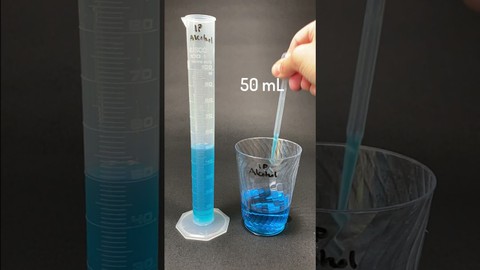Exercise has long been hailed as a universal remedy for a myriad of health issues, and its benefits are widely recognized. However, the intricate molecular mechanisms that underpin these benefits have remained somewhat elusive, until now. A monumental study by the Molecular Transducers of Physical Activity Consortium (MoTrPAC) has shed light on the extensive effects of exercise on the body, revealing that more than 35,000 molecules are affected by physical activity. This study, which is the largest of its kind, has also unearthed striking differences in how exercise influences fat metabolism in males and females—a finding that could have significant implications for personalized health and fitness strategies.
The MoTrPAC study, a collaborative effort involving over 100 scientists across the United States, has taken a deep dive into the molecular actions that translate vigorous movement into health benefits. Utilizing rats as study subjects, due to their physiological similarities to humans, the researchers have set the stage for further investigations into human responses to exercise. Joshua Adkins, a key scientist in the study, encapsulates the curiosity driving this research: “Everyone knows that exercise is good for you, but no one knows exactly why.” The quest to understand the body’s reaction to exercise has led to the discovery of molecular signals that indicate a range of benefits, from improved liver function and heart muscle strength to enhanced immunity and reduced inflammation.
The sex-dependent responses to exercise in fat metabolism
It have captured the attention of the scientific community. Christopher Newgard, a director at the Duke Molecular Physiology Institute and a corresponding author of the study, highlights the dichotomy: “Males burn fat for energy while females preserve their fat mass.” This difference is not only evident in the molecular responses in fat tissue but also in the initial health of the fat stores, with male rats starting with less healthy fat.
Gina Many, the first author of the study, further explains that while both sexes mobilize their metabolism during exercise, they do so in distinct ways. Females, for instance, tend to draw less from their fat stores, likely due to the importance of fat mass for reproductive health. This nuanced understanding of sex differences in exercise fat metabolism underscores the necessity of including both men and women in health studies, as historically, more men have been the focus of exercise research.
The implications of these findings are profound. Newgard admits that the study has significantly altered his approach to research, particularly in the context of insulin resistance. The data from this study serves as a roadmap for future experiments, with the potential to influence personalized exercise recommendations and interventions for conditions such as obesity.
The NIH-funded project has also highlighted the universal impact of exercise on the body. It is not just the muscles that respond to physical activity; all tissues, including those not typically associated with movement, adapt to endurance exercise. This comprehensive response includes changes in genes, proteins, and metabolites across various tissues, with unique responses in each. For example, the adrenal glands, which had not been previously associated with exercise, showed substantial changes in mitochondrial function as a result of endurance training.
The study also emphasizes the importance of including both male and female animals in pre-clinical research, as the differences in molecular responses to exercise are more widespread than previously thought. These findings are crucial for understanding how exercise interventions could be tailored for men and women experiencing health conditions like obesity.

As researchers continue to map the molecular changes in the body following exercise, both in humans and rats, they are creating a valuable resource for the biomedical community. This map will guide future research and could eventually lead to personalized exercise regimens for treating or preventing various health conditions. The MoTrPAC study is a testament to the power of collaboration and the importance of comprehensive research in unraveling the complexities of exercise and health.
Exploring exercise impact on fat metabolism in males and females
We find ourselves at the cusp of a new frontier in personalized health and fitness. The groundbreaking findings from the MoTrPAC study not only illuminate the profound sex differences in exercise response but also beckon a reevaluation of how we approach exercise prescription and health interventions.
The study’s revelation that males predominantly burn fat for energy while females tend to preserve their fat mass during exercise has profound implications. This dichotomy in fat metabolism is a clarion call for personalized exercise programs that consider sex as a critical factor. The implications of these findings extend beyond the realm of fitness and into the broader landscape of healthcare, particularly in the management of conditions such as obesity and insulin resistance.
The NIH-funded MoTrPAC study’s comprehensive approach to examining the molecular changes across various tissues in response to exercise has underscored the universal impact of physical activity. It’s not just the muscles that are getting a workout; tissues like the adrenal glands are also showing significant changes, particularly in mitochondrial function. This discovery is pivotal, as it challenges the traditional view that only certain tissues are involved in the exercise response.

Moreover, the study’s findings on the differences in molecular responses to exercise between male and female rats in tissues such as the brain, adrenal gland, lung, and fat tissue are groundbreaking. These differences may hold the key to understanding how exercise interventions could be tailored to effectively combat conditions like obesity in men and women. The study’s emphasis on the necessity of including both sexes in future research is a testament to the complexity of the body’s response to exercise and the need for a nuanced approach to health studies.
The MoTrPAC study group’s publication in Nature Metabolism has provided a temporal map of the multi-omic response to endurance exercise, offering a treasure trove of data for the biomedical community. This map is not just a snapshot of the changes that occur in the body due to exercise; it’s a dynamic representation of the molecular dance that unfolds over time. By making this data publicly available, the study encourages further exploration and hypothesis generation, fostering a collaborative spirit in the pursuit of understanding the molecular underpinnings of exercise benefits.
The implications of this study are far-reaching. As researchers continue to analyze the human data from the ongoing exercise study, we inch closer to the possibility of clinicians prescribing specific, personalized exercise regimens. These regimens could be tailored to treat or prevent a myriad of health conditions, taking into account an individual’s age, sex, body composition, and fitness level.
The MoTrPAC consortium, a beacon of collaboration and high-impact research, is paving the way for a new era of exercise science. Funded by the NIH Common Fund and overseen by various National Institutes, MoTrPAC’s mission to decode the molecular transducers of physical activity is a monumental undertaking. The consortium’s work is not just about understanding exercise; it’s about transforming our approach to health and wellness.
As we reflect on the study’s findings, it’s clear that the path to optimal health is not one-size-fits-all. The sex differences in exercise fat metabolism are a reminder that personalized medicine is not a distant dream but an imminent reality. The MoTrPAC study has provided a roadmap, and it’s up to us to follow it, exploring the myriad ways in which exercise can be harnessed for the betterment of human health.
The MoTrPAC study has illuminated a new path in understanding the complex relationship between exercise and health. It has shown us that the benefits of exercise are not just skin deep; they permeate every tissue in our bodies, influencing our molecular makeup in profound ways. As we continue to unravel the mysteries of exercise, we are reminded of the power of scientific inquiry and the potential for discovery to transform lives. The journey ahead is as exciting as it is essential, and the promise of personalized health strategies based on rigorous scientific research is a beacon of hope for a healthier future for all.
Related posts:
Study Reveals Surprising Sex Differences in Fat Metabolism
Endurance exercise affects all tissues of the body, even those not normally associated with movement
Scientists chart how exercise affects the body





